- Home
- Louis Sachar
More Sideways Arithmetic From Wayside School Page 4
More Sideways Arithmetic From Wayside School Read online
Page 4
3. The person who was third to the top, was second to the bottom.
4. Kathy was fourth to the top.
5. Allison was fourth to the bottom.
6. Ron reached the top ahead of Deedee.
7. Ron reached the bottom ahead of Dameon.
g
For each race, tell what order the children finished.
g
Race To Top
1st. ________________________
2nd.________________________
3rd. ________________________
4th. ________________________
5th. ________________________
g
Race To Bottom
1st. ________________________
2nd.________________________
3rd. ________________________
4th. ________________________
5th. ________________________
g
(Clue on page 44. Hint on page 45.)
g
Problems 56 and 57
The Great Watermelon Drop
g
Five students were paired up with five teachers for the Great Watermelon Drop.
The five students were Myron, Dameon, D.J., Dana, and Jenny. The five teachers were Mrs. Jewls, Miss Worm, Miss Mush, Mr. Kidswatter, and Louis, the Yard Teacher.
g
Rules:
It worked like this:
• A watermelon was placed by a window in each classroom.
• The first student had to push the watermelon out the window on the first floor, and his or her teacher/partner had to try and catch it.
g
g
• The second student then pushed a watermelon out of the second story window, and that student’s teacher/partner had to try and catch it.
g
g
• Then the third student pushed a watermelon out of the third story window, and so on.
• If all five watermelons were caught, then the student from the first floor would move up to the sixth floor, and push that watermelon out the window. And so on.
• If a teacher failed to catch a falling watermelon, then that teacher, and his or her student/partner were OUT. But the next student still had to push the watermelon from the next highest floor. For example: If a student pushed a watermelon out the tenth story window, and the teacher missed it, they would be OUT, and the next student would push a watermelon out of the eleventh story window.
g
Facts:
1. All female students were partnered with male teachers.
2. D.J. went first. He pushed the watermelon out the first story window. His teacher/partner caught it.
g
g
3. The next student pushed a watermelon out the second story window. The teacher groaned as he caught it.
4. The next student pushed a watermelon out the third story window. The teacher missed it, and the crowd cheered as they watched the watermelon smash against the pavement.
5. The next two teachers caught the watermelons dropped from the fourth and fifth floor. One of those watermelons was pushed out by Myron.
6. The next two teachers caught the watermelons from the sixth and seventh floors.
7. Miss Worm fell down trying to catch the next one. The cheers were even louder this time, as the watermelon exploded on the sidewalk.
8. Jenny pushed the watermelon out the ninth story window. Her teacher caught it.
9. Mrs. Jewls caught the next one from the tenth floor.
10. Splat! The next teacher missed. Everyone cheered.
11. The next five watermelons were caught. Mr. Kidswatter, who was no longer in the contest, said, “Perhaps we should call it a tie. I don’t want anyone to get hurt.” But they decided to keep going.
g
g
12. The next watermelon was caught.
13. The student pushed the watermelon out of the window on the eighteenth floor. Splat! The teacher failed to catch it and the game was over.
g
56. Who was on the winning team?
57. What were the other teams, and on what floor were they put OUT?
g
(Clue on page 44. Hint on page 45.)
g
g
Chapter 15
Conclusion
PROBLEM 58
Egg Toss, Somersault Race, and Pie Eating Contest
g
Facts:
1. Todd signed up to be in the somersault race and the egg toss.
2. Joy would like to enter both the pie eating contest and the egg toss.
3. If Joy wins the pie eating contest, then she will not be allowed to enter the egg toss.
4. Jenny would like to enter the somersault race and the pie eating contest, but she can’t because they are both at the same time. So she will enter the pie eating contest, unless she is wearing her favorite shirt with all the sparkles. If she is wearing that shirt, she will enter the somersault race instead.
5. If Joy enters the egg toss, then Todd will get egg in his hair. (If she doesn’t enter the egg toss, his hair will stay clean and fresh.)
6. The only person in the whole world who can beat Joy in the pie eating contest is Jenny.
7. The only person in the whole world who can beat Todd in the somersault race is Jenny.
8. Everyone who enters the pie eating contest ends up with whipped cream on their noses.
g
Based on the above facts, which of the following conclusions must be true? (There may be more than one.)
g
a: If Jenny wears her sparkly shirt, Todd will win the somersault race.
b: If Jenny’s shirt doesn’t have sparkles, Todd won’t win the somersault race.
c: If Joy wins the pie eating contest, Todd will win the somersault race.
d: If Todd has egg in his hair, Jenny will have whipped cream on her nose.
e: If Joy has whipped cream on her nose, Todd will have egg in his hair.
g
g
(There is no clue or hint for this problem.)
g
Clues
In general:
Remember that in solving arithmetic problems you work from right to left. So when I speak of the “first column” I mean the “one’s column,” or the column furthest to the right. When I speak of the “last column” I mean the column furthest to the left.
When solving the arithmetic problems, be careful not to confuse the letter o with the number zero, or the letters i or l with the number one.
Some of the clues give you several steps to follow. Make sure you understand the first step, before moving on to the next one.
g
Problem 1:
g
g
Notice that b + b has to equal a two digit number. That means that b has to be 5 or more. But the key to the problem is the circled s. To begin the problem, you have to figure out what number the circled s must represent. Then you will change all s’s to that number and solve for y.
g
Problem 2:
g
g
This problem has two possible solutions.
Notice that l + l = l and that i + i = i.. They both can’t be zero. What other number would cause this result? (You have to carry.) You will need to make either i or l zero. The letter you don’t make zero will be that other number.
g
Problem 3:
g
g
Begin by trying to figure out the letters s and c.
g
Problem 4:
g
g
This is an upside-down version of the first problem. It would be the same as seal + seal = llama. The key, once again, is the circled l in llama.
g
Problem 5:
g
g
You should know by now that p has to be the number 1. That means i has to be either 0 or 5. Which one works?
g
Problem 6:
g
g
This time it should be clear that e has to be 1. The key here is that n can’t be 2. What is n?
g
Problem 7:
g
g
After figuring out that f has to be 1, you should be able to get g, a, and then most importantly o.
g
Problem 8:
g
g
Begin with the letter t. Notice that in the first column, 4 times o equals t. Therefore, t must be even. And if you look in the last column you see that 4 times t equals a single digit number.
g
Problem 9:
g
g
You should begin by figuring out what numbers the circled s, h, and most importantly e must be. Then notice the second column: e + r = l. So what is the relationship between l and r?
g
Problem 10:
g
g
Notice that t is one more than s. That should give you p.
g
Problem 11:
g
g
Now that we’re adding three numbers, the circled t can be 1 or 2. Which is it?
g
Problem 12:
g
g
This problem was included because while making up these problems I discovered a unique quality about the number 5. Observe:
g
g
Now see if you can find the number 5 in the problem.
g
Problem 13:
g
g
In the first column notice that two l’s + t = t (or a number that ends in t.) That means that l + l is either zero or ten. The second column should answer that question.
g
Problem 14:
g
g
Begin with the letter t. Don’t forget there isn’t an 8 anywhere in the problem. That is essential in figuring out e and a.
g
Problem 15:
g
g
Start with one + one = zero. Notice that in the first column, e + e = o, and in the third column, o + o = e. How is that possible?
g
Problem 16:
g
g
Start with Z. That should then give you the circled M and then the circled S. As you work your way through the problem you should be able to get all the letters except for the letters N and R. That is where the letter Q comes in. With the letter Q all 10 digits are used in the problem. And don’t forget Q is more than N.
g
Problem 17:
g
g
This problem also uses all ten digits. It may be helpful to write out the numbers, 0 1 2 3 4 5 6 7 8 9, and then as you figure out the letters, write the letter under the corresponding number. For example, you should figure out right away that w = 1. So write the letter w under the number 1. As you continue to work the problem it will become useful to be able to look at your list so that you can clearly see what numbers are still available.
g
Problem 18:
g
g
Again it will be helpful to make a list of the numbers, even though only nine digits are used in this problem. The key to get you started is noting that in the third column, i + e = e, yet i cannot be zero, because of the last column.
g
g
Problem 20:
g
g
Which letter represents the number one? Which letter is zero? Now solve for m.
g
Problem 21:
g
g
Notice that o x h = o (or a number that ends with o.) Also that n x h = n (or a number that ends with n.) Begin by trying to solve for h.
g
Problem 22:
g
g
Begin in the addition portion of the problem. You see that e + e = e. Therefore e has to be zero. Now look at the multiplication part of the problem. Do you see why t x t has to be less than ten?
g
Problem 23:
g
g
Notice that y x rye = rye. That should give you y. Then notice that b x e = y (or a number that ends with y.) That should give you b and e. At first you may not know which is which, but it can be worked out.
g
Problem 24:
g
g
Notice that o + m = m. You know by now that o must be zero. Now notice that a x dim equals a number divisible by one hundred. That means that im must equal either 25 or 75.
g
Problem 25:
g
g
Begin with the addition portion of the problem, and try to determine a and i. Then notice that i x y = y (or a number that ends with y.) You already know i. What’s y? (It isn’t zero.)
g
Problem 26:
g
g
1. Begin by determining e and d in the addition portion of the problem.
2. Notice t x t = e (or a number that ends with e.)
This should give you t.
3. Try to figure out the letter o in rot.
4. Try to figure out r in the addition portion of the problem. (Notice it has to be an even number.)
g
Problem 27:
g
g
Notice that e x e = s and e + e = s. What are e and s?
g
Problem 28:
g
g
Begin with y in the addition portion of the problem. Then e. Then w.
g
Problem 29:
g
g
Start with the following.
g
1. e + d = e What is d?
2. e x i = e (or a number that ends in e) and w x i = w (or a number that ends in w.) What is i?
g
Problem 30 Spelling: You know that one student got every answer correct, and another student got every answer wrong. Therefore their answers must be different for every single question. Find the two students who never gave the same answer. To determine which of those two got them all right, check to see whose answers would give Jenny a better grade than Terrence.
Problem 31 Bugs: You know John got a better grade than Joe. They gave the same answer to every question, except for question 5. What does that tell you about the answer to question 5? (You don’t know yet how they did on the first four questions, just that they both did the same on them.)
Problem 32 Outer Space: Leslie got a better grade than Paul. Leslie and Paul only answered one question differently.
Problem 33 Facial Expressions: Calvin and Leslie got different answers for every question, but so did Joy and Bebe. By comparing their answers to Jason’s (who you know only missed one) you will see that the person who got all five correct had to be either Calvin or Joy.
Problem 34 Colors: Dana got three right. D.J. got two right. They answered every question differently from each other. Since there were only five questions, th
at means that each question was answered correctly by one of them, and missed by the other.
Problem 35 Flowers: Since Bebe and Calvin each got three right, there has to be at least one question that they both answered correctly.
Problem 36 Nations of the World: To determine Benjamin’s grade, you first have to determine the correct answer for each question. Notice that all four gave different answers for question 5. Yet they all missed it. So what must be the answer to question 5? Now move to question 2.
Problem 37 Transportation: The three Erics each answered two questions correctly. Since there are only five questions, that means that there has to be at least one question that at least two Erics answered correctly.
There are no clues for problems 38–52.
Problem 53 Relay Race: There are four on each team. You are told that Leslie and Paul are on a team, and that Sue and Benjamin are on a team. The four of them can’t be on the same team because each team has to have either Todd or Joy.
Problem 54 Sack Race: Begin by trying to figure out in what order Terrence, Jenny, Eric Bacon, and Allison finished.
Problem 55 Stairway Races: Use symbols or letters to show that the person who lost the race to the top, won the race to the bottom, etc.
g
Race To Top
1st. _____y______
2nd.____________
3rd. _____z______
4th. ____________
5th. _____x______
g
Race To Bottom
1st. _____x______
2nd._____z______
3rd. _____y______
4th. ____________
5th. ____________
g
This shows that some person, ‘x,’ came in fifth on the way up, and first on the way down. Someone else, ‘y,’ came in first on the way up, and third on the way down. And ‘z’ came in third on the way up, and second on the way down. Now enter Allison and Kathy. Then try to figure out who are ‘x,’ ‘y,’ and ‘z.’
Problems 56 and 57 The Great Watermelon Drop: Number a sheet of paper from 1–18, each number representing a different floor. On each floor write down what happened. You have to keep track of where each team goes next. For example, the team on the first floor is also the team on the sixth floor, and the tenth floor. This gets a little tricky as teams are put OUT. The beginning of your sheet of paper might look like this.

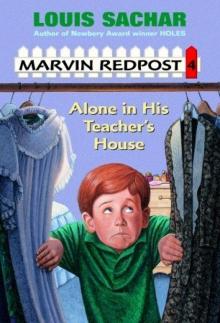 Alone in His Teacher's House
Alone in His Teacher's House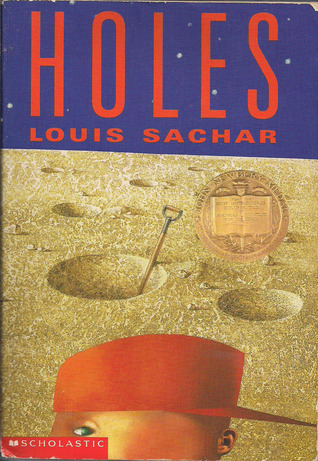 Holes
Holes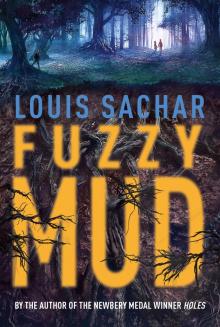 Fuzzy Mud
Fuzzy Mud More Sideways Arithmetic From Wayside School
More Sideways Arithmetic From Wayside School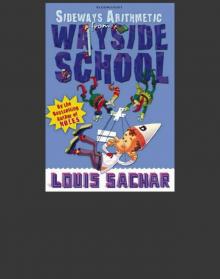 Sideways Arithmetic From Wayside School
Sideways Arithmetic From Wayside School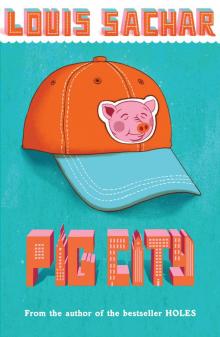 Pig City
Pig City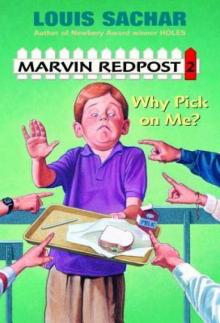 Why Pick on Me?
Why Pick on Me?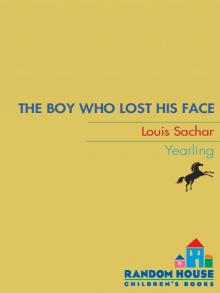 The Boy Who Lost His Face
The Boy Who Lost His Face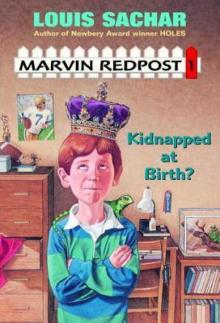 Kidnapped at Birth?
Kidnapped at Birth?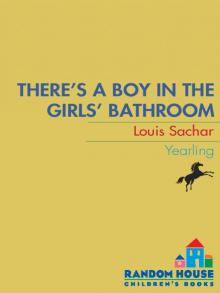 There's a Boy in the Girls' Bathroom
There's a Boy in the Girls' Bathroom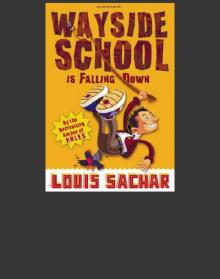 Wayside School Is Falling Down
Wayside School Is Falling Down Stanley Yelnats' Survival Guide to Camp Green Lake
Stanley Yelnats' Survival Guide to Camp Green Lake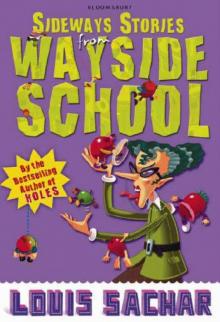 Sideways Stories from Wayside School
Sideways Stories from Wayside School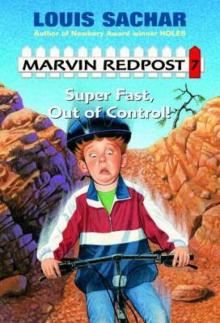 Super Fast, Out of Control!
Super Fast, Out of Control!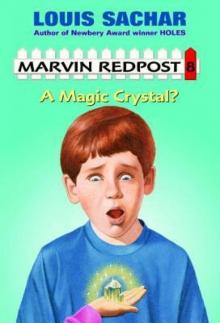 A Magic Crystal?
A Magic Crystal?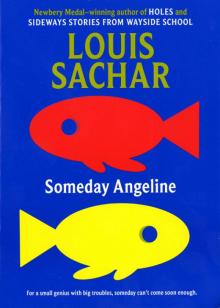 Someday Angeline
Someday Angeline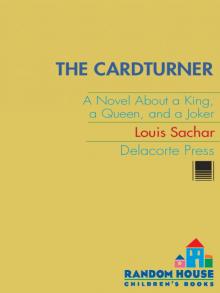 The Cardturner: A Novel About Imperfect Partners and Infinite Possibilities
The Cardturner: A Novel About Imperfect Partners and Infinite Possibilities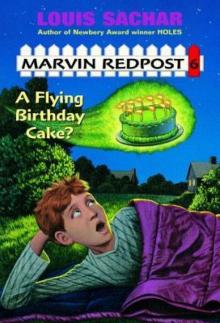 A Flying Birthday Cake?
A Flying Birthday Cake?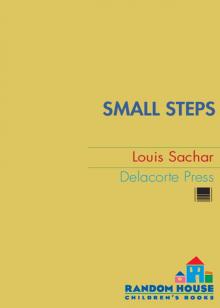 Small Steps
Small Steps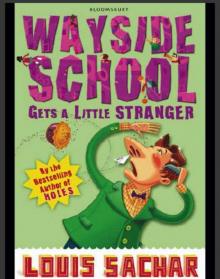 Wayside School Gets a Little Stranger
Wayside School Gets a Little Stranger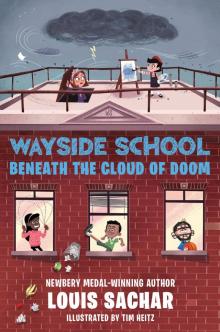 Wayside School Beneath the Cloud of Doom
Wayside School Beneath the Cloud of Doom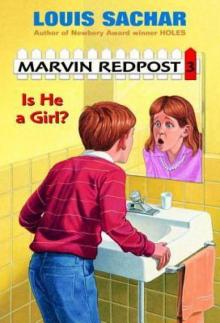 Is He a Girl?
Is He a Girl? Dogs Don't Tell Jokes
Dogs Don't Tell Jokes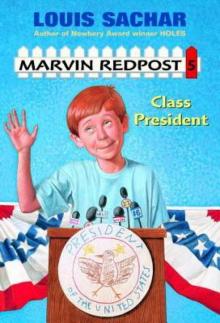 Class President
Class President Kidnapped at Birth
Kidnapped at Birth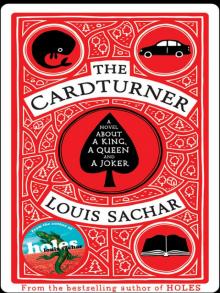 The Cardturner
The Cardturner Stanley Yelnats' Survival Guide to Camp Greenlake
Stanley Yelnats' Survival Guide to Camp Greenlake